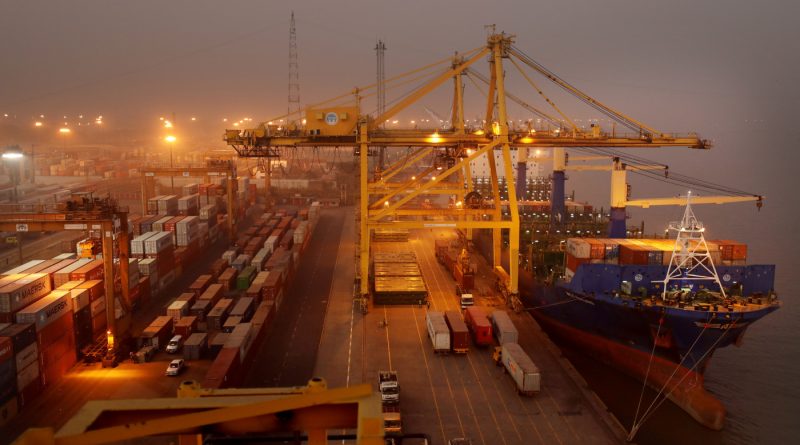Chattogram Port, Bangladesh’s largest seaport and the lifeline of the country’s foreign trade, is facing a mounting container backlog as yard space edges closer to full capacity. Officials insist operations remain smooth, but importers and shipping agents warn that the congestion could soon disrupt trade if not addressed urgently.
For the last three weeks, the port has been handling more than 40,000 containers daily, significantly higher than its usual 32,000 to 35,000. With a maximum storage capacity of 53,500 twenty-foot equivalent units (TEUs), the yards are now operating at nearly 90 percent occupancy. On Wednesday, the port held 47,463 TEUs—slightly lower than the 49,000 containers recorded earlier in the week, but still well above manageable levels.
How the build-up began
Data shows the pile-up started in early August, after the Eid-ul-Adha holidays and amid earlier disruptions caused by customs officials’ work abstentions. On August 1, yard storage stood at 39,678 TEUs. By August 4, it had climbed to 44,287, and numbers have continued to rise since. Officials attribute part of the congestion to reduced deliveries during long holidays and earlier slowdowns at customs clearance desks.
A similar trend was observed at the end of June, when National Board of Revenue (NBR) staff staged protests and temporary work stoppages. At that time, however, the build-up was less severe. For example, 41,314 TEUs were stored on May 24, rising to 42,315 TEUs the next day—well below current levels.
Officials: operations normal
Port authorities maintain that vessel movement and terminal operations are running normally. “Not a single jetty is lying idle. Import and export volumes are increasing, and so is the container load,” said Omar Faruk, Secretary of Chattogram Port. He also noted that ship waiting times have dropped, with only seven or eight container vessels now waiting at the outer anchorage compared to longer queues in recent months.
According to him, turnaround times for vessels have shortened, meaning the port is efficiently handling ship movements even as yard space tightens.
Port users urge action
Despite reassurances, shipping agents and importers say the growing container pile-up is concerning. “There are no NBR strikes or work stoppages like before. Ship congestion has eased and waiting times have reduced. Yet container numbers are still rising. The port needs to take effective measures,” said Syed Mohammad Arif, president of the Chattogram Shipping Agents Association.
Trade bodies fear that if the congestion is not cleared quickly, it could delay deliveries, increase costs, and weaken Bangladesh’s competitiveness in global markets.
Steps to ease the pressure
In response, the NBR has recently directed that containers destined for inland container depots (ICDs) be shifted within two days of arrival at the port. This is expected to free up yard space more quickly and ensure smoother movement of goods.
But port users argue that faster clearance by importers and stronger coordination between customs, port officials, and logistics operators will be essential to prevent the situation from escalating. “Unless importers speed up delivery and the port ensures quicker relocation of containers, the backlog could hurt both imports and exports,” one clearing agent said.
Why it matters
Chattogram Port handles over 90 percent of Bangladesh’s seaborne trade. Any prolonged disruption at the facility risks causing a ripple effect across the economy, from factory production delays to missed shipment deadlines in export markets. Past episodes of congestion—such as in 2017 and during the pandemic—led to severe trade slowdowns, higher freight costs, and strained supply chains.
This time, while vessel operations are running smoothly, the sheer volume of containers stuck in the yard raises red flags. Industry insiders warn that without immediate measures, Bangladesh’s import-dependent industries and time-sensitive exporters—especially in garments—could face setbacks.
For now, authorities say the port is functioning at full capacity. But with container numbers rising steadily, the challenge will be whether Chattogram can prevent today’s congestion from becoming tomorrow’s crisis.






